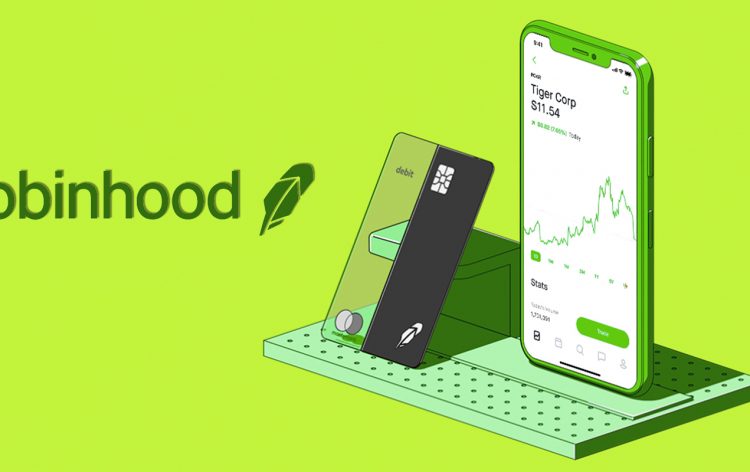Three Reasons Why The Robinhood’s Stocks Will Have A Bad Year

There has been a record low for a Report lately. A hostile macroeconomic backdrop and even negative litigation have pushed the stock to its lowest point, in addition to gloomy considerations including growth misses, severe competition, and customer losses.
It has been an underwhelming start for Robinhood’s stock since its debut on the public market. On its first day of trading in July, Robinhood’s stock price fell by 10% from its $38 initial public offering price. For a brief moment at the beginning of August, shares of the retail brokerage business rose to a high of $85 before falling. Now that Robinhood’s stock is trading below $19, the company’s value has dropped by 50%. It’s still not a terrific bargain for the retail trading platform.
Due to the COVID-19 epidemic, Robinhood’s retail trading platform witnessed an increase in consumer sign-ups in 2020. Because of worse crypto market circumstances in the third quarter of 2021, Robinhood’s monthly active user growth decreased significantly. Robinhood’s trading and client acquisition on the retail-focused platform were boosted by the DOGE-USD surge in the second quarter.
There were a record 21.3 million monthly active users on the retail brokerage platform in the second quarter, which is becoming more popular with millennials. However, in the third quarter, Robinhood’s rise in monthly active users plummeted due in large part to the dramatic decline in cryptocurrency values, particularly joke currencies like Dogecoin. There were 18.9 million monthly active users at the end of the third quarter, down 11% from the previous quarter.
In the third quarter, Robinhood suffered a huge reduction in transaction-based revenues due to a decrease in customer acquisition and the number of monthly active customers. Transaction-based revenue grew 32% year-over-year; but, quarter-over-quarter, it decreased by 41%.
Reasons Why You Shouldn’t Buy Robinhood Stocks
By raising interest rates, a rise in inflation is projected from the US central bank next month. Due to the rising interest rates, investors may be tempted to abandon growth stocks and cryptocurrencies in favor of assets that profit from them, such as Treasurys.
So, although a rise in interest rates is good news for banks, it might be bad news for brokers.
According to Deutsche Bank, KeyBanc, and Goldman Sachs, Robinhood is an interest-rate-sensitive stock, which has lately decreased its price expectations for the company.
In compensatory damages, Robinhood has been forced to pay a retail investor over $30,000 in damages. Robinhood’s move in January 2021 to prohibit trading on some “meme” stocks resulted in huge losses for the 27-year-old investor, who filed a complaint in May 2021.
Investors may use this judgment as a precedent to hold Robinhood accountable, according to plaintiff’s lawyer Jorge Altamirano.
In January 2021, this is anticipated to be the first of many lawsuits won by regular investors due to limits on Robinhood’s trading of meme stocks. It’s possible that Robinhood may face a lot more legal difficulties in the future.
It is expected that Robinhood will reveal its fourth-quarter 2021 financial results on January 27, 2019. Stock analysts on Wall Street are forecasting a loss of 26 cents a share.
Wall Street had predicted the same thing for the company’s second-quarter earnings, which is interesting. At the time, Robinhood’s gain of 44 cents astonished observers, in large part because of a growth in bitcoin trading.
By Barron’s, online trading platform Robinhood’s IPO might be valued at $35 billion. As Barron points out, the rationale for that valuation is to apply its $1.35 billion in revenues over the last year, multiplied by the price/sales ratio of 26 that was used to value TD Ameritrade in 1999.
In the previous five years, Robinhood believes that it has established half of all new brokerage accounts in the United States. Because of its zero-commission pricing approach, its co-founders Vlad Tenev and Baiju Bhatt were able to attract millions of new investors, forcing traditional brokers to follow suit.
Investors should be worried about speculation of a regulatory crackdown on important revenue components as the company’s fast expansion slows. SEC Chair Gary Gensler, as reported by TheStreet.com, has expressed concerns about the payment for order flow.
Robinhood Financial Outlook
To put it another way, Robinhood expects total net revenues to be less than $340 million in the first quarter of 2022, which implies some additional increase in trading volumes. According to the upper end of that range, this means that revenue will be down 35 percent year over year in comparison with the first quarter of 2021, when we had outsized revenue performance owing to increased trading activity, notably in relation to specific meme-stocks.
In terms of overall net sales, outcomes might vary significantly from what we expect. Customer trading volume, the number of funded accounts, the number of transactions per customer, and the market environment (or other exogenous occurrences) are all variables that influence total net revenues.
Last year, Robinhood’s entrance on the stock exchange was much anticipated by investors. In spite of this, the company’s stock has plummeted roughly 60 percent from its all-time high. Sadly, it seems like the stock will suffer further losses in the near future.


























Comments (0 comment(s))